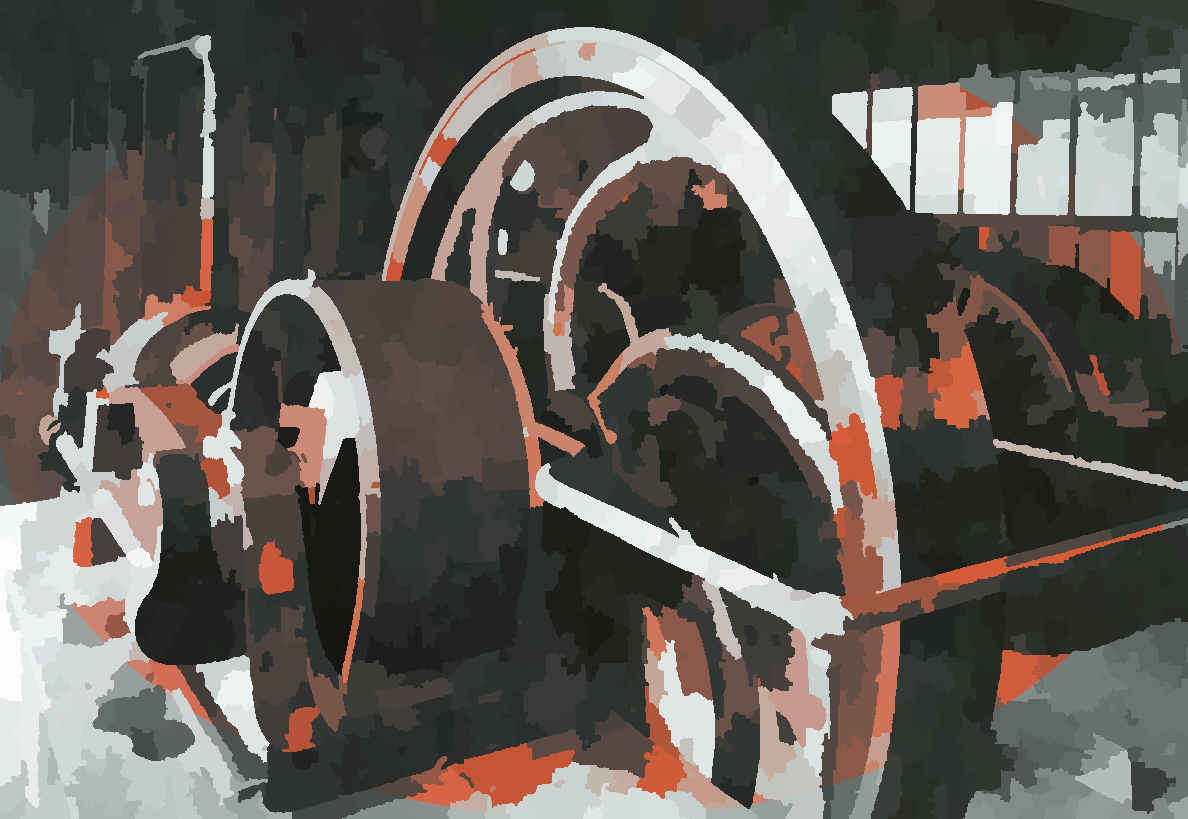|
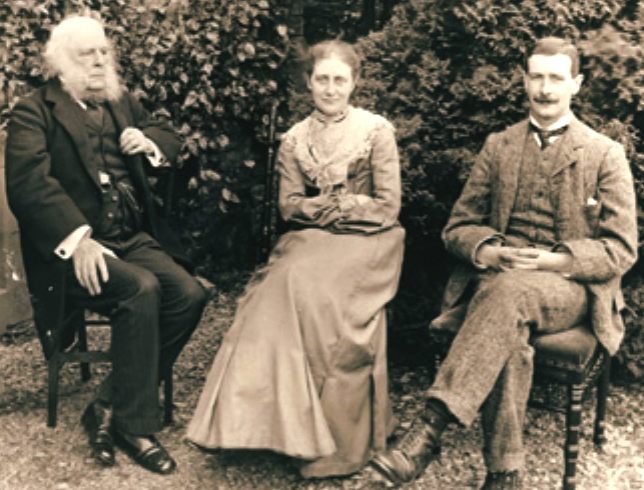
Rupert Potter, Beatrix Potter and Bertram Potter
Helen Beatrix Potter (28 July 1866 – 22 December 1943) was an
English author, illustrator, natural scientist and
preservationist best known for her imaginative children’s books featuring animals such as those in The Tale of Peter Rabbit which celebrated the British landscape and country life.
Born into a privileged Unitarian family, Potter, along with her younger brother, Walter Bertram (1872–1918), grew up with few friends outside her large extended family. Her parents were artistic, interested in nature and enjoyed the
countryside. As children, Beatrix and Bertram had numerous small animals as pets which they observed closely and drew endlessly. Summer holidays were spent in
Scotland and in the English
Lake District where Beatrix developed a love of the natural world which was the subject of her painting from an early age.
She was educated by private governesses until she was eighteen. Her study of languages, literature, science and history was broad and she was an eager student. Her artistic talents were recognized early. Although she was provided with private art lessons, Potter preferred to develop her own style, particularly favouring
watercolour. Along with her drawings of her animals, real and imagined, she illustrated insects, fossils,
archeological artefacts, and fungi. In the 1890s her mycological illustrations and research on the reproduction of fungi spores generated interest from the scientific establishment. Following some success illustrating cards and booklets, Potter wrote and illustrated The Tale of Peter Rabbit publishing it first privately in 1901, and a year later as a small, three-colour illustrated book with Frederick Warne & Co. She became unofficially engaged to her editor Norman Warne in 1905 despite the disapproval of her parents, but he died suddenly a month later, of
leukemia.
With the proceeds from the books and a legacy from an aunt, Potter bought Hill Top Farm in Near
Sawrey, a tiny village in the
English Lake District near Ambleside in 1905. Over the next several decades, she purchased additional farms to preserve the unique hill country landscape. In 1913, at the age of 47, she married William
Heelis, a respected local solicitor from Hawkshead. Potter was also a prize-winning breeder of Herdwick
sheep and a prosperous farmer keenly interested in land preservation.
She continued to write, illustrate and design spin-off merchandise based on her children’s books for Warne until the duties of land management and diminishing eyesight made it difficult to continue. Potter published over twenty-three books; the best known are those written between 1902 and 1922. She died on 22 December 1943 at her home in Near Sawrey at age 77, leaving almost all her property to the National Trust. She is credited with preserving much of the land that now comprises the Lake District National Park.
Potter’s books continue to sell throughout the world, in multiple languages. Her stories have been retold in song, film,
ballet and animation.
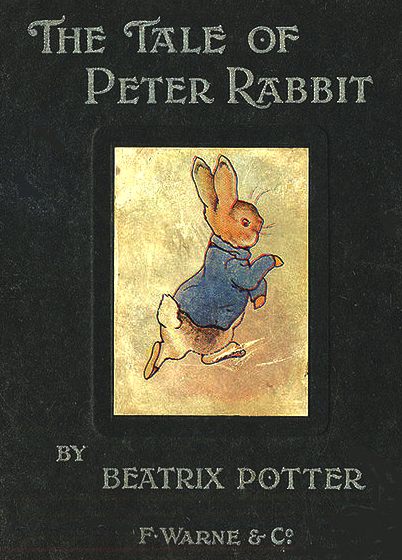
Beatrix worked closely with the National Trust, helping it to acquire land and manage farms to ensure long-term preservation.
Since an early meeting at Wray Castle, Beatrix became a good friend of Canon Hardwicke Drummond Rawnsley – one of the three co-founders of the National Trust. When she died in 1943, she left 4,000 acres of land and countryside in our care, as well as 14 farms. Her legacy has helped ensure the survival of the Lakeland landscape.
LITERARY
CAREER
Potter’s artistic and literary interests were deeply influenced by fairies, fairy tales and fantasy. She was a student of the classic fairy tales of Western
Europe. As well as stories from the Old Testament, John Bunyan's The Pilgrim's Progress and Harriet Beecher Stowe's Uncle Tom's Cabin, she grew up with Aesop’s Fables, the fairy tales of the Brothers Grimm and Hans Christian Andersen, Charles Kingsley's The Water
Babies, the folk tales and mythology of Scotland, the German Romantics,
Shakespeare, and the romances of Sir Walter Scott. As a young child, before the age of eight, Edward Lear's Book of Nonsense, including the much loved The Owl and the Pussycat, and Lewis Carroll's
Alice in Wonderland had made their impression, although she later said of Alice that she was more interested in Tenniel's illustrations than what they were
about. The Brer Rabbit stories of Joel Chandler Harris had been family favourites and she later studied his Uncle Remus stories and illustrated
them. She studied book illustration from a young age and developed her own tastes, but the work of the picture book triumvirate Walter Crane, Kate Greenaway and Randolph
Caldecott, the last an illustrator whose work was later collected by her father, was a great
influence. When she started to illustrate, she chose first the traditional rhymes and stories, "Cinderella", "Sleeping Beauty", "Ali Baba and the Forty Thieves", "Puss-in-boots", and "Red Riding
Hood". But most often her illustrations were fantasies featuring her own pets: mice, rabbits, kittens, and guinea
pigs.
In her teenage years Potter was a regular visitor to the art galleries of London, particularly enjoying the summer and winter exhibitions at the Royal Academy in
London. Her Journal reveals her growing sophistication as a critic as well as the influence of her father’s friend the artist Sir John Everett Millais who recognised Beatrix’s talent of observation. Although Potter was aware of art and artistic trends, her drawing and her prose style were uniquely her
own.
As a way to earn a bit of money in the 1890s, Beatrix and her brother began to print
Christmas cards of their own design, as well as cards for special occasions. Mice and rabbits were the most frequent subject of her fantasy paintings. In 1890 the firm of Hildesheimer and Faulkner bought several of her drawings of her rabbit, Benjamin Bunny, to illustrate verses by Frederic Weatherly titled A Happy Pair. In 1893 the same printer brought several more drawings for Weatherly’s Our Dear Relations, another book of rhymes, and the following year Potter successfully sold a series of frog illustrations and verses for Changing Pictures, a popular annual offered by the art publisher Ernest
Nister. Potter was pleased by this success and determined to publish her own illustrated
stories.
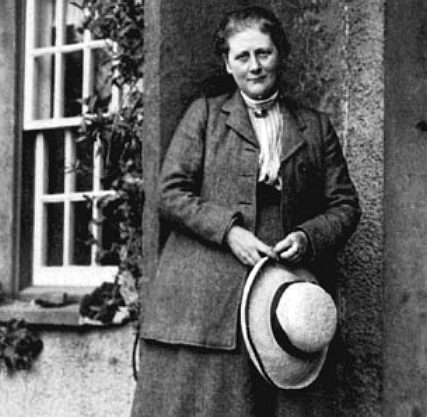
Beatrix Potter and Hill Top
- By 1905, Warne had published six of Beatrix Potter’s books, including The Tale of Mrs
Tiggy-Winkle. She used the profits to buy her first farm, 17th-century Hill Top Farm in Near Sawrey village in the Lake District. Along with the surrounding countryside it became inspiration for many of her subsequent books.
In the summer of that year, Norman Warne proposed marriage and she accepted. But tragically, Norman fell ill and died four weeks later. Beatrix threw herself into the running of her farm whilst working on more ‘little books’. The Tale of Tom Kitten and The Tale of Jemima Puddle-Duck were both set in and around Hill Top.
Whenever Potter went on holiday to the Lake District or Scotland, she sent letters to young friends illustrating them with quick sketches. Many of these letters were written to the children of her former governess Annie Carter Moore, particularly to her eldest son Noel who was often ill. In September 1893 Potter was on holiday at Eastwood in
Dunkeld, Perthshire. She had run out of things to say to Noel and so she told him a story about "four little rabbits whose names were
Flopsy, Mopsy, Cottontail and Peter." It became one of the most famous children’s letters ever written and the basis of Potter’s future career as a
writer-artist-storyteller.
In 1900, Potter revised her tale about the four little rabbits, and fashioned a dummy book of it - it has been suggested, in imitation of Helen Bannerman's 1899 bestseller The Story of Little Black
Sambo. Unable to find a buyer for the work, she published it for family and friends at her own expense in December 1901. It was drawn in black and white with a coloured frontispiece. Family friend Canon Hardwicke Rawnsley had great faith in Potter's tale, recast it in didactic verse, and made the rounds of the London publishing houses. Frederick Warne & Co. had previously rejected the tale but, eager to compete in the booming small format children's book market, reconsidered and accepted the "bunny book" (as the firm called it) following the recommendation of their prominent children's book artist L. Leslie
Brooke. The firm declined Rawnsley's verse in favour of Potter's original prose, and Potter agreed to colour her pen and ink illustrations, choosing the then-new Hentschel three-colour process for reproducing her
watercolours.
On 2 October 1902 The Tale of Peter Rabbit was
published, and was an immediate success. It was followed the next year by The Tale of Squirrel Nutkin and The Tailor of Gloucester which had also first been written as picture letters to the Moore children. Working with Norman Warne as her editor, Potter published two or three little books each year for a total of twenty-three books. The last book in this format was Cecily Parsley's Nursery Rhymes in 1922, a collection of favourite rhymes. Although The Tale of Little Pig Robinson was not published until 1930, it had been written much earlier. Potter continued creating her little books until after the
First World War when her energies were increasingly directed toward her farming, sheep-breeding and land
conservation.
The immense popularity of Potter’s books was based on the lively quality of her illustrations, the non-didactic nature of her stories, the depiction of the rural countryside, and the imaginative qualities she lent to her animal characters.
Potter was also a canny businesswoman. As early as 1903 she made and patented a Peter
Rabbit doll. It was followed by other "spin-off" merchandise over the years, including painting books, board games, wall-paper, figurines, baby blankets and china tea-sets. All were licensed by Frederick Warne & Co. and earned Potter an independent income as well as immense profits for her
publisher.
In 1905, Potter and Norman Warne became unofficially engaged. Potter's parents objected to the match because Warne was "in trade" and thus not socially suitable. Sadly the engagement lasted only one month when Warne died of leukemia at age
thirty-seven. That same year Potter used some of her income and a small inheritance from an aunt to buy Hill Top Farm in Near Sawrey in Lancashire in the English Lake District. Potter and Warne may have hoped that Hill Top Farm would be their holiday home, but after Warne's death Potter went ahead with its purchase as she had always wanted to own that farm and live in "that charming village".
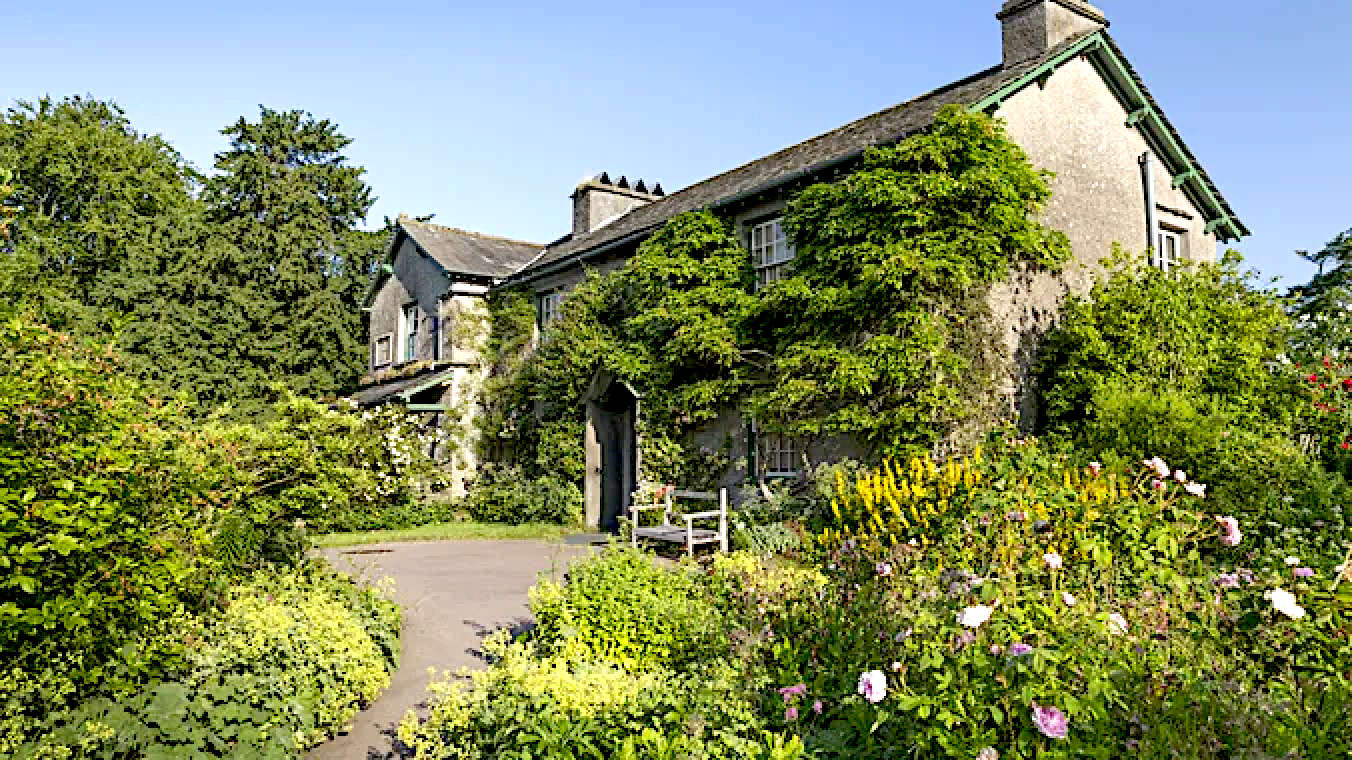
THE
NATIONAL TRUST
In 1895, founders of the National Trust - Octavia Hill, Robert Hunter and Hardwicke Rawnsley - pledged to preserve
the historic and natural places in the UK. Their aim was not only to save important sites, but to open them up for everyone to enjoy.
They created the National Trust, and more than 125 years later, their mission is at the heart of everything they do.
The Trust looks after the nation’s coastline, historic sites, countryside and green spaces, ensuring everyone benefits.
From wild and precious places to the world outside your window the National Trust offers access, enjoyment and a chance for everyone to help out. Nature and the historic environment are under threat. They’re essential to everyone, they enrich people’s lives and are part of the fabric of society and they urgently need more care.
With their staff, members, volunteers and supporters, we are the biggest conservation charity in
Europe:
- More than 780 miles of coastline
- More than 250,000 hectares of land
- More than 500 historic houses, castles, parks, and gardens
- Nearly a million works of art
The
National Trust own Rudyard Kipling's home in Burwash: Batemans.

CONTACT
THE NATIONAL TRUST
Near Sawrey, Cumbria, LA22 0LF
W.
https://www.nationaltrust.org.uk/discover/history/people/beatrix-potter
T. 01539436269 E. hilltop@nationaltrust.org.uk
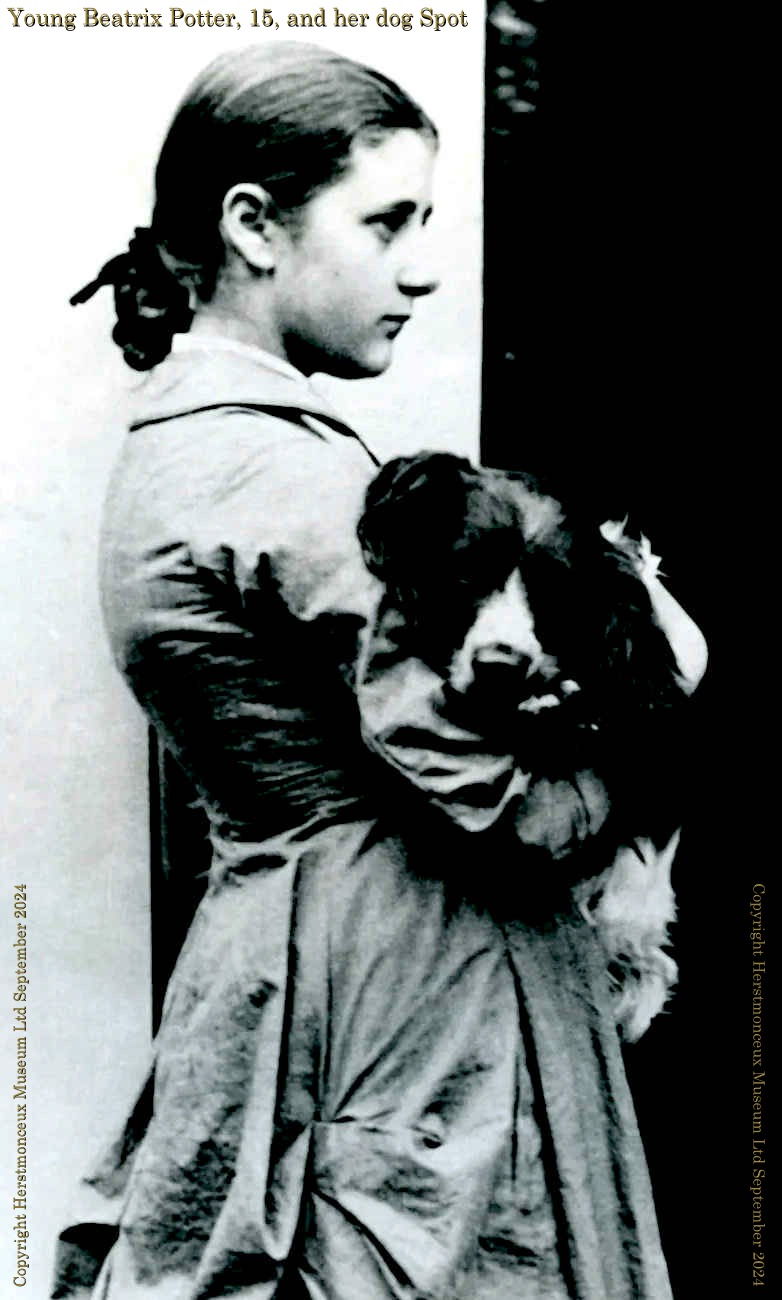
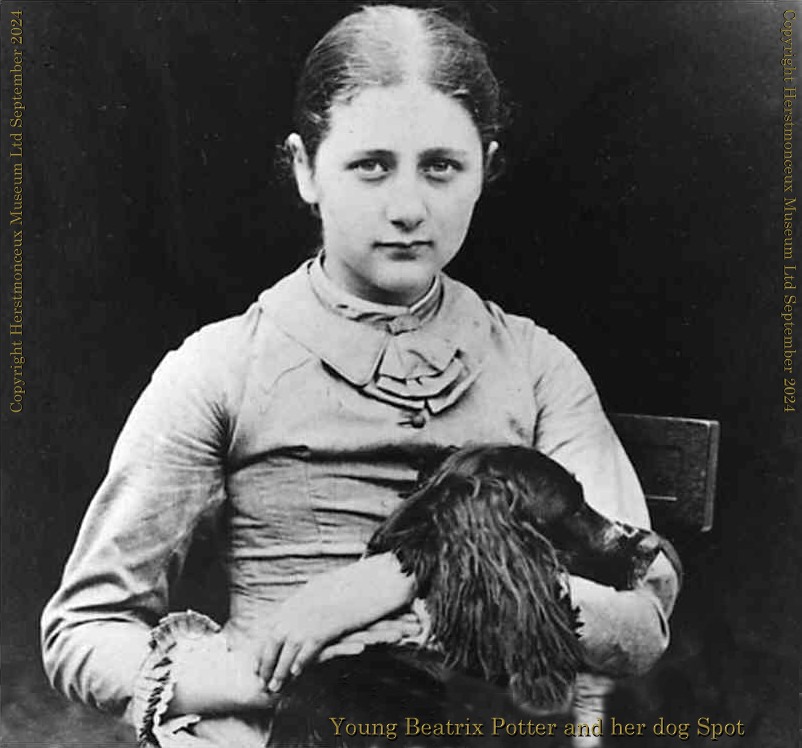
THE
BEATRIX POTTER SOCIETY
The Beatrix Potter Society was founded in November 1980, and its very first Newsletter was published immediately – four black-and-white pages with no illustrations, other than the familiar mouse logo. It describes the purpose of the Society and gives notification of some Potter-related exhibitions and books, as well as information about where to find collections of original Potter material. There is also a tribute to Enid Linder, sister of Leslie (Beatrix Potter’s first collector, who transcribed her coded Journal). Miss Linder died before she could take up her role as one of the Society’s two Patrons (the other being Margaret Lane, author of the first biography of Beatrix Potter), but Newsletter 1 announces the inauguration of an annual Linder Lecture – still going strong – in memory of the Linder family.
The Beatrix Potter Society has been registered as a charity in the United Kingdom since 1980. They exist to promote the study and appreciation of the life and works of Beatrix Potter (1866 – 1943), who was not only the author of The Tale of Peter Rabbit and other classics of children’s literature, but also a landscape and natural history artist, diarist, farmer and preservationist. She was also responsible for the preservation of large areas of the Lake District through her gifts to the National Trust.
The Beatrix Potter Society upholds and protects the integrity of the inimitable and unique work of Beatrix Potter, her aims and bequests and brings together on a worldwide basis those people who share
these interests.
The Society seeks to educate the public in, and promote research into, the life and works of Beatrix Potter by charitable ways and for the public benefit, and the Society publishes the results of research. To achieve these aims, the Society:
- affords a means of communication for the exchange of ideas worldwide between Members, scholars, institutions and members of the general public who have a mutual interest in the life and works of Beatrix Potter;
- sponsors and supports special charitable projects related to the life and works of Beatrix Potter;
- holds meetings where knowledge and opinion about the life and works of Beatrix Potter can be shared and discussed;
- arranges visits to places of interest connected with the life and works of Beatrix
Potter.
CONTACT
THE SOCIETY
General Enquiries
- info@beatrixpottersociety.org.uk
Membership Enquiries - membership@beatrixpottersociety.org.uk
Sales Enquiries - sales@beatrixpottersociety.org.uk
PUBLICATIONS
The Tale of Peter
Rabbit (1902)
The Tale of Squirrel Nutkin (1903)
The Tailor of Gloucester (1903)
The Tale of Benjamin Bunny (1904)
The Tale of Two Bad Mice (1904)
The Tale of Mrs.
Tiggy-Winkle (1905)
The Tale of the Pie and the Patty-Pan (1905)
The Tale of Mr. Jeremy Fisher (1906)
The Story of A Fierce Bad Rabbit (1906)
The Story of Miss Moppet (1906)
The Tale of Tom
Kitten (1907)
The Tale of Jemima
Puddle-Duck (1908)
The Tale of Samuel Whiskers or, The
Roly-Poly Pudding (1908)
The Tale of the Flopsy Bunnies (1909)
The Tale of Ginger and Pickles (1909)
The Tale of Mrs. Tittlemouse (1910)
The Tale of Timmy Tiptoes (1911)
The Tale of Mr. Tod (1912)
The Tale of Pigling Bland (1913)
Appley Dapply's Nursery Rhymes (1917)
The Tale of Johnny Town-Mouse (1918)
Cecily Parsley's Nursery Rhymes (1922)
The Tale of Little
Pig Robinson (1930)
MISS POTTER THE MOVIE
2006
Miss Potter is a 2006 biographical drama film directed by Chris Noonan. It is based on the life of children's author and illustrator Beatrix Potter, and combines stories from her own life with animated sequences featuring characters from her stories, such as Peter Rabbit. Scripted by Richard Maltby Jr., the director of the Tony Award-winning Broadway revue, Fosse, the film stars Renée Zellweger in the title role, Ewan McGregor as her publisher and fiancé, Norman Warne, and Lloyd Owen as solicitor William Heelis. Emily Watson stars as Warne's sister, Millie. Lucy Boynton also stars as the young Beatrix Potter and Justin McDonald appears as the young William Heelis. It was filmed in St. Peter's Square Hammersmith, Cecil Court, Osterley Park, Covent Garden, the Isle of Man, Scotland and the Lake District.
Miss Potter received a limited release in the United States on 29 December 2006 so that the film could compete for the 2007 Academy Awards. The film was intended to be released generally on 12 January 2007, but Variety reported that The Weinstein Company had decided to push a wider release date until after the Academy Awards on 25 February
2007. The date seemed to fluctuate a number of times, but the Weinstein Company website ultimately listed its release date as 9 March. The film received positive reviews from critics, with praise directed towards Zellweger's performance, and grossed over $35.8 million worldwide. Zellweger was nominated for the Saturn Award for Best Actress and the Golden Globe Award for Best Actress – Motion Picture Comedy or Musical.
PLOT
In 1902, Beatrix Potter and her chaperon, Miss Wiggin, visit the publishing house of Harold and Fruing Warne, who decide to publish her The Tale of Peter Rabbit. While Beatrix is thrilled, behind closed doors the Warnes think her book is ridiculous and only agree to publish it because they promised their younger brother, Norman, a project.
Norman and Beatrix meet, and realise they share a vision for her work. As production on the book begins, Norman introduces Beatrix to his mother, and his unmarried sister, Millie, who befriends Beatrix. Tensions rise in the Potter household, as Beatrix's social-climbing mother, Helen, is unhappy about her daughter spending time in the company of tradesmen, and she believes that the book venture will fail.
However, the book sales are very successful, and Norman encourages Beatrix to submit other stories for publication. Eventually, Beatrix's father, Rupert, voices his support of Beatrix's writing career, after hearing about the popularity of her books from his friends at the Reform Club. Encouraged, Beatrix invites Norman and Millie to her family's Christmas party. Beatrix shows Norman a story she is writing especially for him, "The Rabbits' Christmas Party", giving him a drawing from the story as a present. Finally left unchaperoned, Norman proposes to Beatrix, and she happily accepts.
Beatrix's parents disapprove of the match, but she stands firm, reminding her mother that both her grandfathers were tradesmen. Beatrix learns that not only can she survive on her own with her books, but that she is now a wealthy woman from her royalty earnings. Her parents eventually suggest that Beatrix and Norman keep their engagement secret for the summer months, and promise that they can marry if their feelings remain unchanged after three months. The Potters holiday in the Lake District, and Beatrix and Norman maintain a regular correspondence.
After a few days without a letter from Norman, Beatrix receives a message from Millie, informing her that he is ill. Beatrix travels back to London only to find that Norman has died. A grieving Beatrix shuts herself up in her room; she turns to her drawing, but discovers that her characters disappear off the page. Millie comes to visit and comfort her, and Beatrix decides she must leave the family home.
Beatrix buys a farm in the country in the Lake District and moves there to resume her work. She hires a farmhand to run the farm and finds comfort in her surroundings. Millie visits, returning the painting of The Rabbits' Christmas Party. With the help of her solicitor, William Heelis, Beatrix outbids developers at auctions and buys many other farms and land in the area to preserve nature.
A textual epilogue reveals Beatrix, to her mother's disapproval, married William eight years after moving to the Lake District. The land she purchased formed part of the Lake District National Park in North West England, while her stories became the best-selling children's books of all time.
FILM CAST
- Renée Zellweger as Beatrix Potter
- Lucy Boynton as Young Beatrix
- Ewan McGregor as Norman Warne
- Emily Watson as Millie Warne
- Barbara Flynn as Helen Potter
- Bill Paterson as Rupert Potter
- Lloyd Owen as William Heelis
- Justin McDonald as Young William
- Anton Lesser as Harold Warne
- David Bamber as Fruing Warne
- Phyllida Law as Mrs. Louisa Warne
- Judith Barker as Hilda
- Matyelok Gibbs as Miss Wiggin
- Lynn Farleigh as Lady Sybil
- John Woodvine as Sir Nigel
- Jane How as Lady Armitage
- Geoffrey Beevers as Mr. Copperthwaite
- Clare Clifford as Mrs. Haddon-Bell
- Richard Mulholland as Ashton Clifford
PRODUCTION
The film was director Chris Noonan's first in 10 years (since he made Babe), having waited for many years until he finally found a script that inspired him. Cate Blanchett, who originally suggested Noonan for the role of director, was at one point set to star in the film but apologetically left the project when one of her other films was green-lit before this one. Zellweger ended up becoming an executive producer on the film because she was dissatisfied with the script and wanted to get more involved.
The film was first brought to Ewan McGregor's attention by Zellweger, who had kept in contact with him after collaborating on Down with
Love. McGregor described the film as having a somewhat similar appeal as that film, and noted that he was familiar with Beatrix Potter's stories, which he read to his
children. To prepare for the role, McGregor studied photographs of Norman Warne and visited the modern-day Warne publishing house. Zellweger read actual letters between Beatrix Potter and Norman Warne and Millie to prepare for the role, but had difficulty with the accent, which she said was very different from Bridget Jones'.
As there were no records of Beatrix Potter's speaking voice, they had to guess; ultimately the voice was softened so as not to irritate contemporary audiences with the tight, high voice a woman of Beatrix Potter's standing at that time may have had. Zellweger said that she had read a few of Beatrix Potter's stories growing up, but that she had never known anything about the woman herself. Noonan said that when growing up he had never read Beatrix Potter's stories, and that, "I was aware of her because of all that crockery with her characters on it."
The film used animated versions of Beatrix Potter's characters and illustrations, which were composited into the live-action shots. According to Chris Knott (who had previously worked on Who Framed Roger Rabbit), VFX supervisor on the film for Passion Pictures, they were given access to collections of Potter's original work to help them recreate it for the
animations. Noonan said that it was hard to find anyone who still did cel animation, but did end up finding such a person in Alyson Hamilton, who already had a great deal of appreciation for Potter's work. Costumes for the film were designed by Academy Award winner Anthony Powell. The score for the film was composed by Nigel Westlake (who had previously worked with Noonan on Babe) although Rachel Portman was brought in to record some of the music for the Lake District scenes. Westlake was asked by Noonan during filming to come up with a waltz-like tune for some of their lyrics, and, with the collaboration of Mike Batt and Katie Melua, this same song was also turned into a pop song used in the end credits of the film.
RECEPTION
The film received positive reviews. As of June 2020, the film holds a 67% approval rating on review aggregator Rotten Tomatoes, based on 129 reviews with an average rating of 6.22 out of 10. The critics' consensus is that it is a "charming biopic that maintains its sweetness even in sadder moments."
SONGS
"When You Taught Me How to Dance" - Performed by Katie Melua
"Let Me Teach You How to Dance" - Performed by Ewan McGregor
CHARACTERS
NOVELIST
INDEX
A - Z
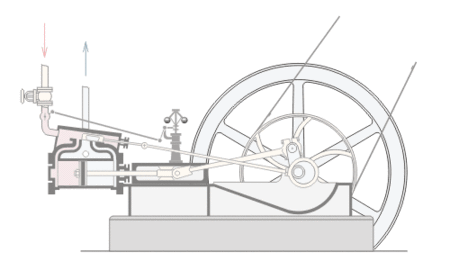
|
